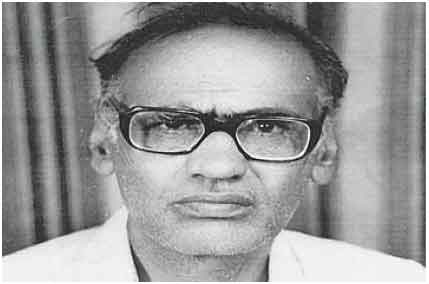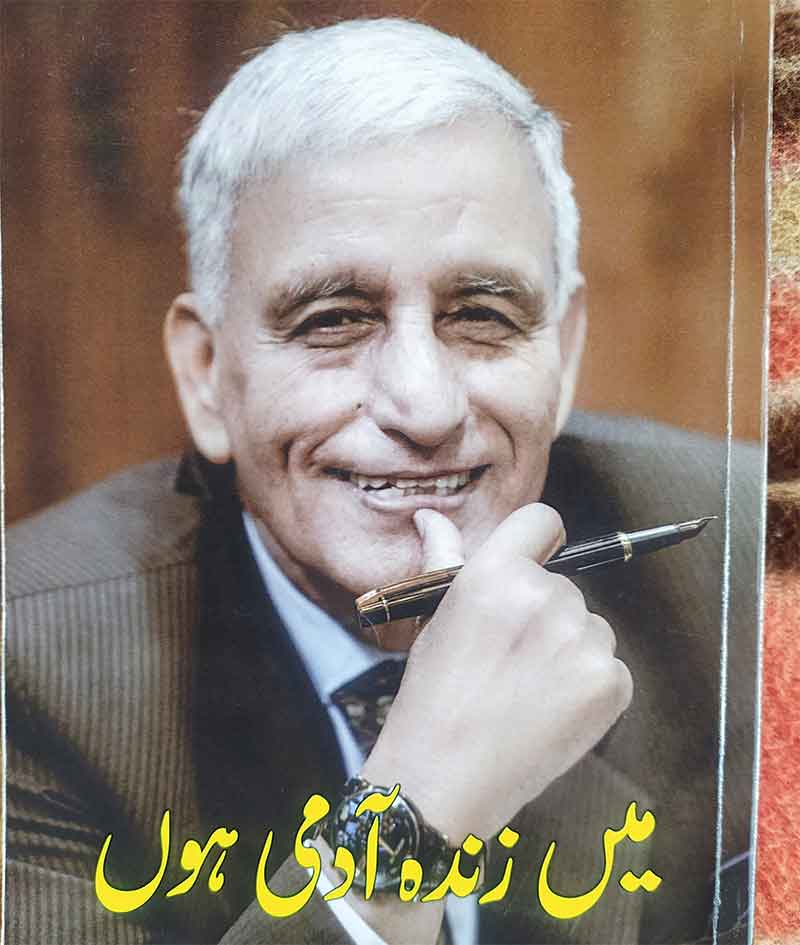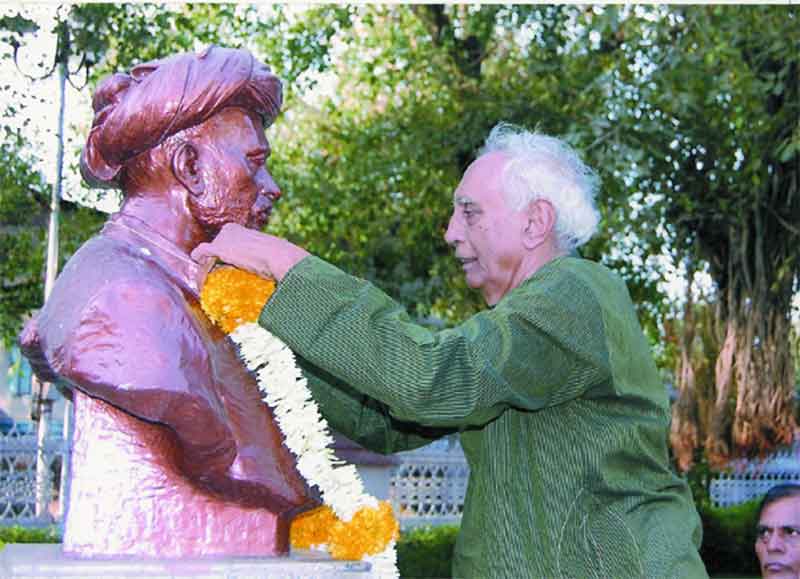
On November 9th yesterday, we commemorated the 38th death anniversary of Chandra Pulla Reddy, one of the most dedicated Communist revolutionaries of India. Confronting the darkest waters he combated revisionism with the tenacity of a boulder and shimmered light of Mao thought.
No doubt he made serious errors of left and right variety but strived to practice mass line to the best of his understanding. He was branded as a revisionist in the Vinod Mishra mould by the C.P.I. (M.L.) central Team in 1978 who failed to uphold any of his revolutionary credibility, which manifested the sectarian approach, within the revolutionary camp. Chandra Pulla Reddy taught us invaluable lessons which are relevant when the Communist party forces remain splintered or scattered. His methods of demarcating from revisionism, right deviation and left adventurism are an invaluable lesson for all. Writings were a yardstick to assess mass line.
CP was an epitome of tenacity in uniting the party and projecting an All-India perspective. His group also one of the biggest trade Union movement within the ML-camp. He displayed utmost humility even rejecting the offer of being general secretary of the party in 1975. . The subtle flowing style of his writing made it easily comprehended by readers and common folk. .With dialectical construction he strived to formulate a programme adhering to the massline His thesis of resistance struggle were in important ways akin to writings of Telengana armed struggle and that of CPC in revolutionary struggle. He strived for maintaining party secrecy till the end and was a thorn in the flesh to the brand of Vinod Mishra revisionism.CP was very critical of the trend of making Mao thought a part of a manifesto of a mass organisation in the 1970’s.He made a thorough, incisive analysis on agrarian revolutionary struggle. Most dialectically he assessed the role of bourgeois opposition parties and nature and strategy of confronting Indian fascism.
CP compiled a masterpiece “World Communist Movement-It’s evolution’ along with other state Committee Manikonda Subba Rao.It very lucidly asessed the root causes of revisionism and deeply enabled cadres to make a rupture from revisionism. During the period of the Great debate he made an intense study of the 9 comments published by the CCP and published the book ‘The polemics between Russia-China.” Here Khrushchev’s revisionism was attacked at it’s hardest point and the essence of the Great Debate was illuminated.
With deep Marxist-Leninist precision he elaborated the phenomena of self-determination of nationalities in India .In great detail and precision he formulated the views of Stalin on a nation Tooth and nail he refuted concept of Khalistan professed by Akali Da land comprehensively covered topic of imposition of Hindi in states and regional tussles.
Life before Naxalbari
On January 19th in 2017, Chandra Pulla Reddy was born in Velogodu village in Andhra Pradesh..C.P.Reddy gained his baptism to Communist Movements from Puchchala palli Sundaraiah.,going on to actively participate in the student movement in Gindi engineering college for which he was expelled from the college. He went on to become C.P.I’s Kurnool district secretary and state Commitee member in 1946.This paved the path for his integration with the armed squads of Telengana in the armed peasant struggle complying with the party request of working in Mahbobnagar forest. He was here arrested and imprisoned .After release from jail he contested from the Nandikotkur Assembly Constituency and elected for Madras Presidency.C.P.became one of the party’s sub-committee member to get the indefinite fast onto death struggle of late Potti Srimamalu withdrawn and also fought for bringing water to Rayalaseema from Srikakulam project on River Krishna.
In 1964 he was arrested under the Defense of India Act for supporting China in 1962 war.C.P.was one of the pioneers with T.Nagi Reddy and D,V.Rao to demarcate Communist movement in Andhra Pradesh from neo- revisionist CPM path. He wrote many an article in organ Janaskti denouncing Khrushchev, and illuminating the path of Stalin and Mao. He waged a sustained struggle with other members to re-educate the rank and file of the party with the ‘Madurai’ document of the C.P.M.The majority of the rank and file of party members ruptured from CPM revisionist line towards the revolutionary orientation of the Communist revolutionaries, who won a significant victory in the Palakollu plenum.CP Reddy was one of the important architects of the Andhra Pradesh coordination Commitee of Communist revolutionaries, which demarcated from left adventurism of Charu Mazumdar
East Godavri Resistance Struggle (Reference from Selected works of Chandra Pulla Reddy)
In the manner of a surgeon fixing the splintered parts of a bone, he re-organised the movement in East Godavri district after 1970. No doubt he was erroneously critical of the massline of Nagi Reddy -DV Rao accusing them of legalism and surrendering from jail itself in 1969 where the party split. Still some of the most articulate actions of self -defence were displayed by the armed squads. Forest areas of Khammam ,Karimnagar,Warangal,East and West Godavri were encompassed.in a span of 7 years. Great emphasis was placed on rectifying errors of left adventurism of Charu Mazumdar.’Resistance Struggle’ devised by CP Reddy constructed a formula similar to Chinese path of blending agrarian revolutionary movement with volunteer squads.
A review was made of the Forest movement in Godavri.which summed up the legal work explaining politics of armed struggle .There was mobilisng people on forest issues, on landlord exploitation, usury and contractors exploitation, seizure of surplus grains from the landlords, and illegally seized lands from the landlords.
In Murugu and Parakal taluk people came forward to ocupy forest lands.and illegally seized lands under the occupation of the landlords.In Bayyaram area of Ellundu Taluq people seized the suplus grains .In Yathalkuntha area of Palvancha Taluq ,girijan s mobilized themselves for the seizure of landlords which they had previously lost to them, defying the police and seizing their crops.In Pagideru area during famine conditions people came forward for the seizure of surplus grain .In Nugur Taluq people resisted the exploitation of Vajedu landlords.
The party won many militants combining the politics of armed struggle with the mobilisation of people, immediate issues and resistance to landlord goondagiri,It paved the path for organizing village committees. Politics of armed struggle was now extended to a large scale traversing areas of Ellundu,Burgumpada,Palvancha,Manthena,Nugur and Prakala taluks.
In 1972 November-December, in Lothur Zone of Sompeta area, about 200 people including women and children from 10 villages, armed with traditional weapons seized crops from 19 areas and sowed crops on them. By 1974 250 acres of land encompassing 30 villages standing crops were seized by the people. It was a shot in the arm to spread the people’s movement in neigbouring villages giving great encouragement. The party gave the call on the Andhra-Orissa border and the Logam area of seizing the crops and the lands. In July August the Girijans occupied 25 acres of such land from the landlords First the party formed village commitees .By 1974 250 acres of land encompassing 30 villages standing crops were seized by the people.
Most dialectically C.P.Reddy asessed that the people were not ready to participate in agrarian revolution. However subsequently great repression was unleashed and a sustained movement could not be built to combat it.Mistakingly the party thought it was ready to wage guerrilla armed struggle. and depended on the strength of the armed squads.
We must give C.P.Reddy for initiating such bold criticism of the mistakes of the party in practicing the massline highlighting how often squad actions replaced people’s initiative .It felt that though it’s basic political line was correct the massline was not consistently practiced ,in formulating the demand of the people, in running the agitation on them, in conducting strike struggles, in organizing the mass organizations at the village level, in organizing the village youth in volunteer organizations, to sending the village youth to secret propaganda in the surrounding villages, in involving people in actions against the peoples enemies ,it could not say that all the zonal commitees and squads implemented the line of the party on all occassions.There were times when implementing the above tasks, comrades depended mainly on the squad and not mainly on the people. When police repression was not so severe from 1970-72 left mistakes affected mass mobilisation and mass work suffered .Only after the 1973 conference was the task of forming secret village committees and legal and illegal mas organizations like youth leagues or girijan associations undertaken seriously.
Overall the successes achieved were
- In all areas where squads were functioning people mobilized themselves to occupy the forest banzars both barren and arable.3 lakhs of banzar lands were occupied
- In forest areas strike struggles were consistently carried for increased wages for all kinds of work.
- In areas of work exploitation of patwaris,patels and forest contractors came to an end.
- Tank binds and night schools were successfully constructed. Canals were dug to create water facilities to irrigate land..
- People’s initiative consciousness and resistance power gas grown with girijans being roused for politics of armed struggle and agrarian revolution.
- Political level and striking capacity of the squads was enhanced. Great emphasis was placed on political education, with regular political classes conducted. In 1974-75 at the peak of police repression the squads heroically launched a counter offensive which greatly boosted self-confidence of members. The party and squad members escaped with virtually no casualties.
- 7.A stable mass base for the movement was constructed .The party line in forest are spread in 7 months from Etunagaram in Warangal district to Polawaram in West Godavri district with many village commitees formed.Inspite of 7 years of prolonged state repression the solid mass base sustained the movement., with squads and committees continuously operating.
- Inspiration to the plains movement..The forest movement crystallised a peasant movement in the surrounding plain regions of Telengana.The consistency, solidity and success of the movements in the forests to defy the administration shimmered its spark to the plain regions to boost struggles there.
However by 1975 repression intensified and movement in Warangal underwent a major retreat,with many participants puling back..It was predominant in Khammam ,Warangal and Palvancha areas where many turned into police informers.
In 1974 C.P.Reddy merged his Andhra Pradesh Group with the C.P.I. (M.L) party of Satya Narayan Singh.Whatever differences he firmly defended the formation of the 1969 CPI(ML).
Post-Emergency Period
After emergency C.P.Reddy strived for unity with other sections. but failed to build a new re-organized party. Talks failed with sections of UCCRI (ML) ,a split took place with Satya Narayan Singh.
In 1981 he openly came out against the revisionist path of China, describing in detail the manner it was towing the capitalist path.
At one time in the late 1970’s CP Reddy group led the biggest All-India movement .It was reflected in the All-India rallies at Delhi in 1989 and 1990 led by what was the C.P.I.(M.L.) Resistance group. which mobilized over 70000 people. .Mass organisations flourished in all spheres. The 1st ever women’s revolutionary organization called the ‘People’s Organization of Women too birth. The Progressive Democratic Students Union fluttered its banner in full force, emerging as the strongest students organisation in Andhra Pradesh..Also pioneered the formation The Indian Federation of trade Unions and Maharashtra students Organization PRAVIS which was earlier PROYOM. In Punjab the farmers group, Kirti Kisan Union was built.
From 1980-83 Chandra Pulla Reddy was critical of the practice of the C.P.I. (M.L) Peoples War Group, assessing that they continued the left adventurist practice of Charu Mazumdar,and violated massline.Sadly it lay the roots for uncalled clashes in the later part of the decade with the Peoples War Group.
C.P. Reddy died on 9 November 1984 in Calcutta as a result of a heart attack.
The Jehenbad-Palamau agrarian struggle of CPI (ML) Party Unity started in 1978 had important similarities to CP Reddy’s resistance struggle, till 1987.
Chandra Pulla Reddy’s supporting the Jayaprakash Narayan movement in 1974, calling for parliamentary participation in elections from 1977 and joint front with opposition parties ,and judging Nagi-Reddy-DV Rao line as rightism ;were erroneous in my view.CP’s greatest flaw was his embarking on opportunist unity with Satya Narayan Singh in 1974, and then splitting.. However overall his positive contribution overshadowed his negative part. Today activists even outside the CP Reddy stream like Arjun Prasad Singh, former secretary of All India Peoples Resistance Forum and Vijay Singh, editor of Revolutionary Democracy, hold him in great esteem. Famous martyrs of CP Reddy line included Neelam Ramchandriah, Ram Narsayya, Jampala Prasad in the 1970’s .Linganna, Ravi and Rama Rao were martyred in recent times.
After Death
Sadly after his death in 1984.splittism became the dominant trend in his party and Many an opportunist merger and splits occurred. The best example was the case of C.P.I (M.L)Janashakti,which after merging 7 different groups in 1992,split into 5 factions later.Major formations adhering to his path were C.P.I(ML)New Democracy formed in 1987 and C.P.I(M.L) Resistance formed in 1980.led by K.Ramchandran.Pyla Vasudeva Rao broke away to form separate group in 1984,rebelling against party leadership. It is regrettable that the New Democracy group again underwent a split by the Chandana faction in 2016 and last year, the Telengana faction, which continues the saga of splits of yesteryears.
An important feature in the period after C.P.Redddy passed away was the martyrdom of many members of his group in the battle against Khalistani fundamentalism and state terrorism in Punjab from 1986-1990.
Today the main protagonist of the CP Reddy Line is the C.P.I.(ML)New Democracy which also adheres to line of Satya Narayan Singh.Notably it mobilised the largest forces in Silguri in 2017 in the rally commemorating 50th anniversary of Naxalbari.I recommend all cadre to regularly read the journal ‘New Democracy’ which is ever consistent in defending Marxism-Leninism-Mao thought. In Punjab today it is leading the movement to re-organise dalit agricultural labour community through the Zameen Prapt Sangarsh committee and the strongest faction of the Punjab Students Union and Naujwan Bharat Sabha.
We need to evaluate how ‘Resistance Struggle’ could be applied in days of globalisation and Hindutva neo-fascism.
I recommend readers to critically read the works of Chandra Pulla Reddy whatever the aberrations which is part of the Marxist-Leninist treasurehouse.I can’t forget the interest of a fellow girl activist to borrow a set of a volume of his writings. I also recommend readers to read the centenary tribute of C.P.Reddy in ‘Rising New Democracy” journal and the tribute in organ ‘New Democracy ‘in 2013.A most valuable collection of his writings are available on the Marxist Internet Archive,. Readers must not dogmatically accept them, but adopt critical approach. Important writings of Chandra Pulla Reddy constitute World Communist Movement and Its Lessons (1967),Chinese Communist Party’s Struggles Against Left and Right Deviations – Mao’s Lessons – Relevance to India (1972) Agrarian Revolution – Attitude of the Communist Revolutionaries (1978) Build the Revolutionary Movement to Defeat Fascism (1980) Attitude toward Opposition Bourgeois Parties and Bourgeois Election Alliances: Lessons from the History of the International Communist Movement (1982)In Defense of Comrade Mao and Mao Zedong Thought (1982) Bourgeois Election Alliances: Certain Experiences from Past History (1982)The Real Face of August 15 ‘Independence’
Harsh Thakor is a freelance journalist. Who has done extensive research on Indian Communist movement
















































